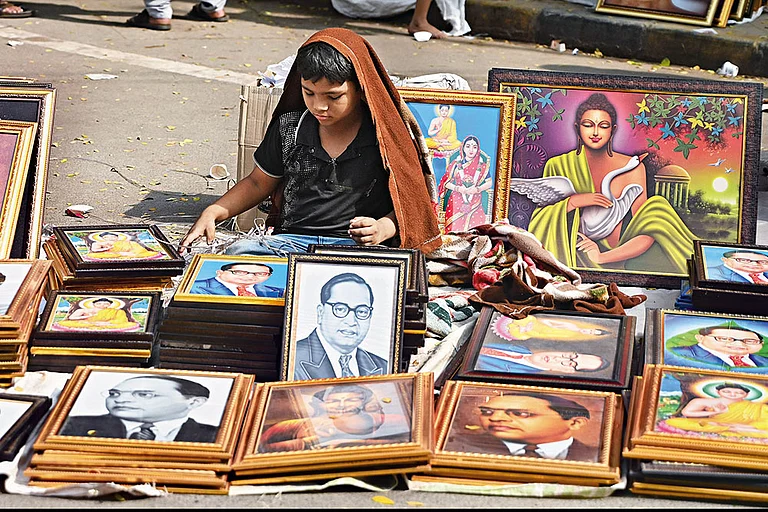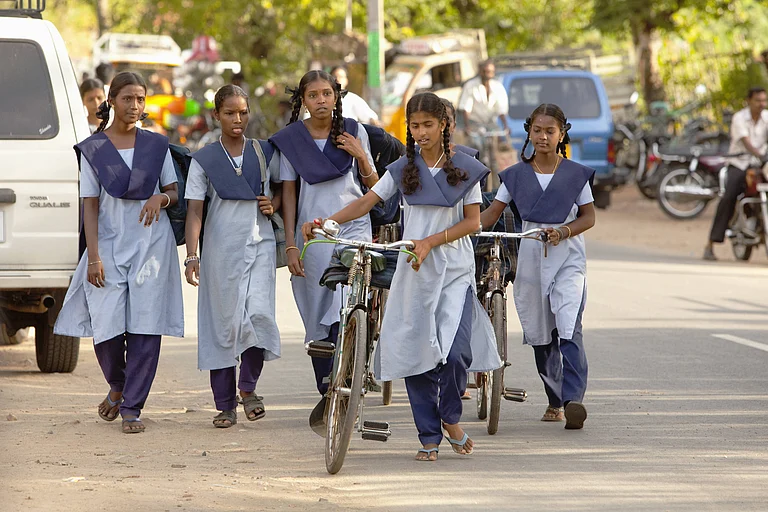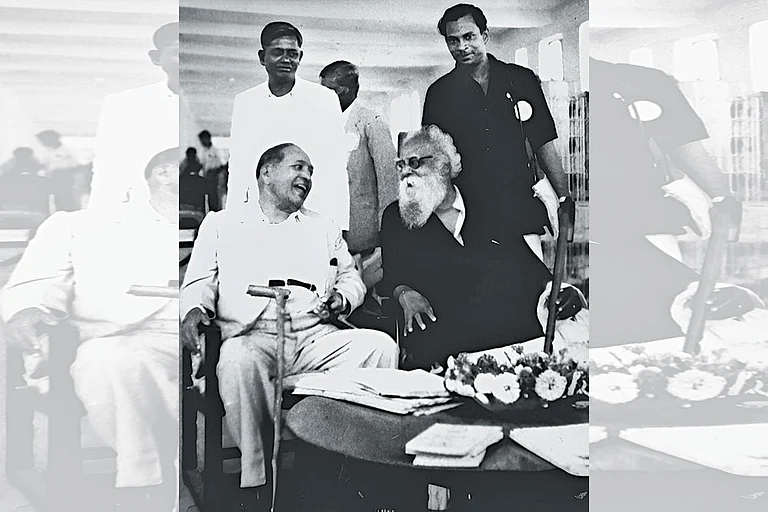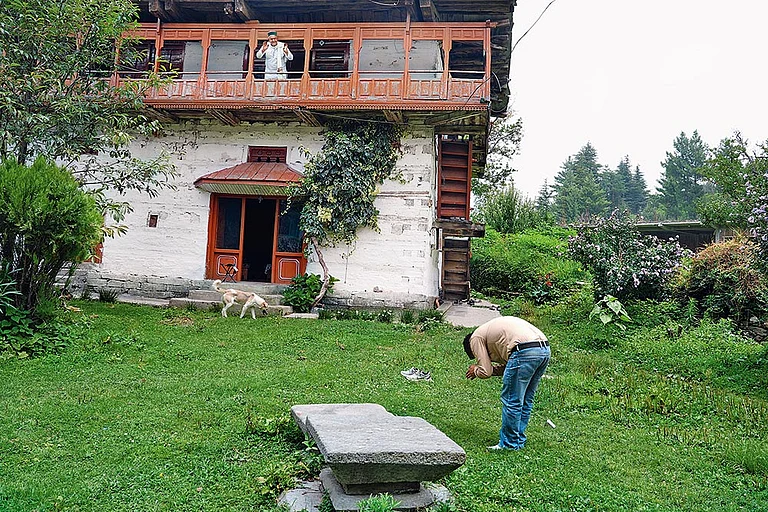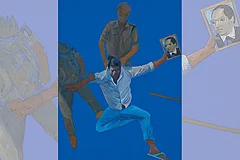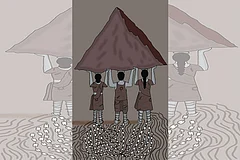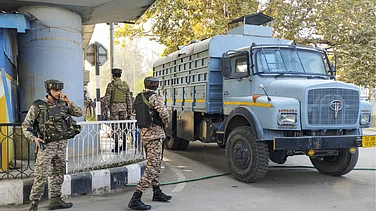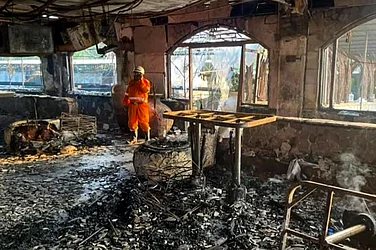All our claims and hopes that human beings would become more civilised and that civilisation itself would become more refined with the passage of time are shot to pieces when faced with the poison of the caste system. It is a horrific and unrelenting nightmare that a large mass of humanity should still be driven by caste in a century characterised by the modern forces of science and technology. It may be that caste is not stamped on our forehead, but it is as blatant as that, and as indelible as a fiat cast in stone. There is no escaping caste; once ascribed at birth, it remains with us even after death.
The vile hierarchy based on caste has existed in the Hindu society of the subcontinent and in other religions influenced by Hinduism, namely Islam, Sikhism, Christianity, Buddhism and Jainism, since the Vedic period. Thanks to this system, priesthood remains the undemocratic patrimony of a particular caste, and members of this caste—rather than oppose their caste dominance—choose to enjoy its privileges. The castes at the other end, living under the influence of “destiny” and cultural traditions, do not come out against it in an organised manner either. Even a politician of Jagjivan Ram’s stature was not immune to being humiliated by the arrogant Pandits of Kashi, simply because he was a Dalit. They publicly “purified” the statue of Swami Sampurnanand that was inaugurated by him. More recently, the priests of a temple dared to humiliate the Chief Minister of Bihar, Jitan Ram Manjhi, who is a Dalit. Our history tells the story of the mighty King Shivaji—who was born a Shudra—being coronated by a Brahmin’s toe. Recently, in Gaya, during Pitru Paksha, five-year-old Brahmin children were seen blessing the elders.
The casteist prejudiced mindset of educated upper-caste women can be seen from a decade-old survey. Published in the women’s special issue of Outlook magazine (28 October, 2002), the survey posed the question: “What do women not want from/in men?” To this, most women responded that they did want the men to be from the lower castes. Remember, this was a survey of an English-language magazine, conducted among English-speaking women of metropolitan cities. You can easily guess the caste location of these modern women. You can also guess how deep Manu’s venom runs in their veins.
A few years ago, Outlook also brought out a booklet on Indian cricket. Among its contents was an article on the Brahmin dominance in the national team. With statistical evidence, the piece underlined a stark phenomenon: it has never been the case that at least five to six (about 50 per cent) of the players in the Indian team are not Brahmins. This should still hold true more or less of our team in 2024.
There is no escaping caste; once ascribed at birth, it remains with us even after death.
On the other hand, there are not only ancient but also recent and modern examples of Dalits acting with craziness. “Say with pride that we are Chamars”—the slogan rang through the grand celebrations of Guru Ravidas’ 640th birth anniversary in Patna’s Sri Krishna Memorial Hall. Exhortations to feel Chamar pride were also found in the posters and hoardings of the event that also carried images of Ravidas (Raidas) with his right hand raised in blessing and his seat raised to “divine” heights in the sky, far above the earth. To make matters worse, the posters and hoardings also included a picture of B R Ambedkar, the author of works such as Riddles in Hinduism and Annihilation of Caste, who kicked the Hindu identity he was born with, and embraced Buddhism.
Raidas, who lambasted superstition, hypocrisy, ritualism, casteism and Brahminism, made an astute observation about the many layers of caste: “Jaat-jaat mein jaat hai, jyon kelan ke paat” (There are castes within castes, like the leaves of a banana tree). As for the Buddha, he has already been destroyed by becoming the god of the confused Buddhists and by being claimed as an incarnation of the Hindu god Vishnu.
If someone claims to be a proud Chamar, then that entails pride in being a Hindu as well. If one can indeed be proud of a caste, which has been considered low, then what is possibly wrong with the caste system? And why then should someone be criticised for their pride in the scripturally-approved highness of belonging to an upper caste or being a Brahmin? So if this is how the Buddha, Raidas, and Ambedkar—great advocates of a rational, scientific consciousness—are to be enshrined in our public memory, why would caste vanish, and how would it vanish?
Thanks to the power of social media, a vulgar orgy of caste pride is going on among the Dalits and the Other Backward Classes (OBCs). For example, an insane and frightening trend of singing the glories of the Chamars has emerged in Punjabi songs through Chamar singers Ginni Mahi and S S Azad. Their songs, woven with caste pride, instil a form of racial pride in Punjabi Chamars.
In literature, there have now begun to appear Ambedkarite writings that are caste-specific. For instance, a Hindi magazine dedicated to addressing Dalit questions brought out a special issue titled ‘Valmiki-Ambedkarwadi Visheshank’ (Valmiki-Ambedkarite Issue). Have the intellectuals who claim Ambedkar as a caste-brother made a show of their pride yet by wrapping themselves in banners that declare “Mahar Ambedkarite”, I wonder.
It is clear that caste and its ideas of mastery-slavery, superiority-inferiority, and purity-impurity are basically rooted and anchored in the divine concepts nurtured by Hindu religious scriptures, which have us in their vicious grip, and present a challenge to people with a scientific, logical or atheistic bent of mind. But it is absolutely essential to combat and end this caste-based dominance if we are to achieve social justice, humanism and equality. The poisonous caste system, which has been around for centuries, has become a horrendous and seemingly incurable disease that has even spread among the castes situated at the lower end of the spectrum and infected them with mutual hatred and hierarchical thinking.
If we want to talk definitively and conclusively about the abolition of the caste system, then we will have to begin by foregrounding Ambedkar’s views. He believed that the Brahmin class is the first and the biggest beneficiary of the caste system. In the eventuality of the eradication of the caste system, the Brahmins stand to lose a lot. It would take away the logic and foundation of their claim of superiority over the people of other castes. Why would the Brahmins ever agree to lead a movement which will result in the destruction of the power and prestige of the Brahmin caste? In Ambedkar’s opinion, inter-caste marriages—we may add inter-religious marriages too—can weaken the caste pride prevailing among the upper castes, but they do not destroy caste immediately. The couples in these marriages ultimately get absorbed into the same system. If inter-caste/inter-religious marriages happen on a large scale, and people from all walks of life, particularly those at the top in politics, get involved in them, then the caste system will break down. However, such a thing is not likely to happen, because the politics of our country at present is not about bridging the barriers of caste and religion, but about strengthening them.
There are 131 MPs from the Scheduled Caste and Scheduled Tribe communities in the Lok Sabha. If they take a united stand, going against their respective party lines, to oppose Brahminism and actively support inter-caste/inter-religious marriages, the caste system will be left gasping for breath. But what can transform them into soldiers of Ambedkar?
(Translated by Kaushika Draavid)
(Views expressed are personal)
MORE FROM THIS ISSUE
Musafir Baitha is a Patna-based hindi dalit writer, poet and recipient of Bihar’s Navodit Sahityakar Puraskar
(This appeared in the print as 'The Die is Caste')







